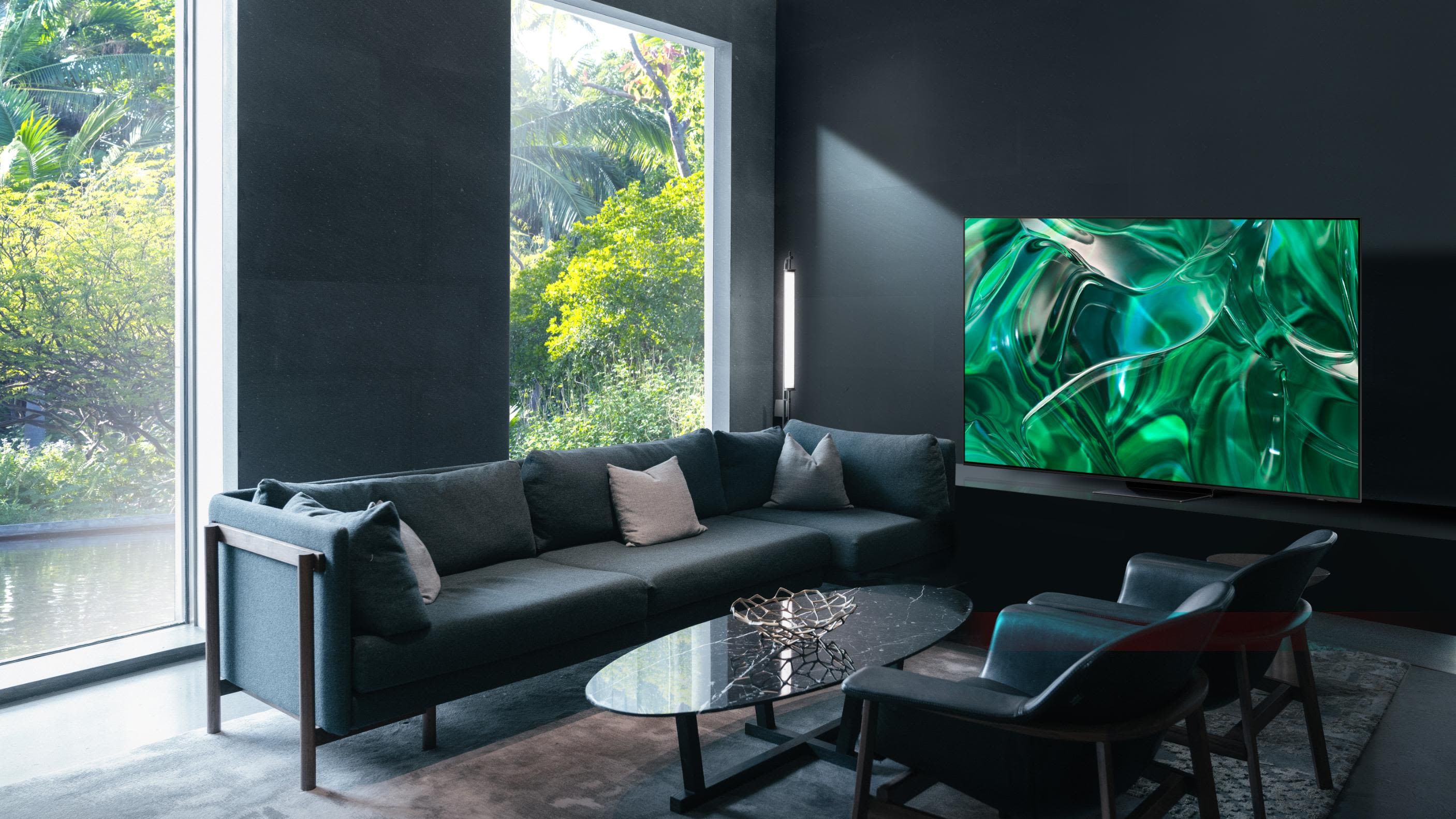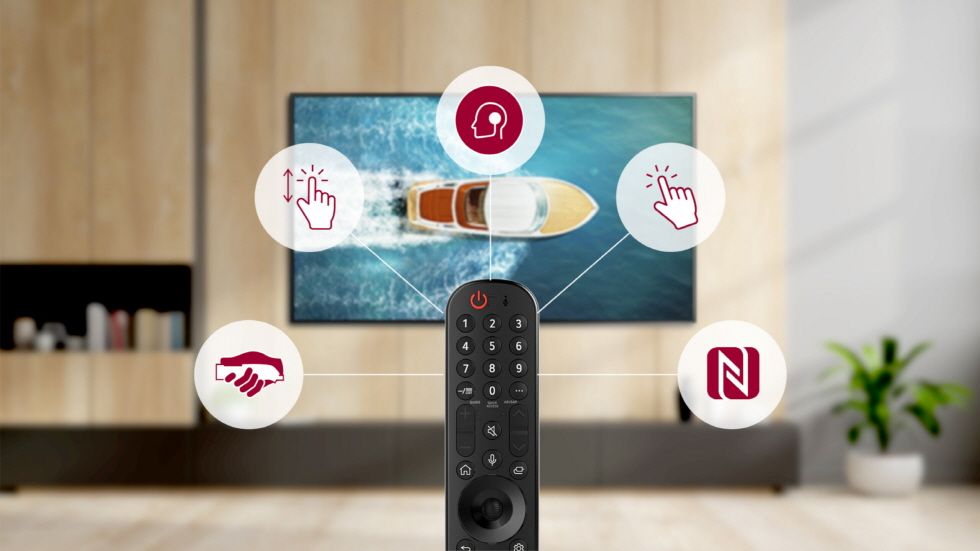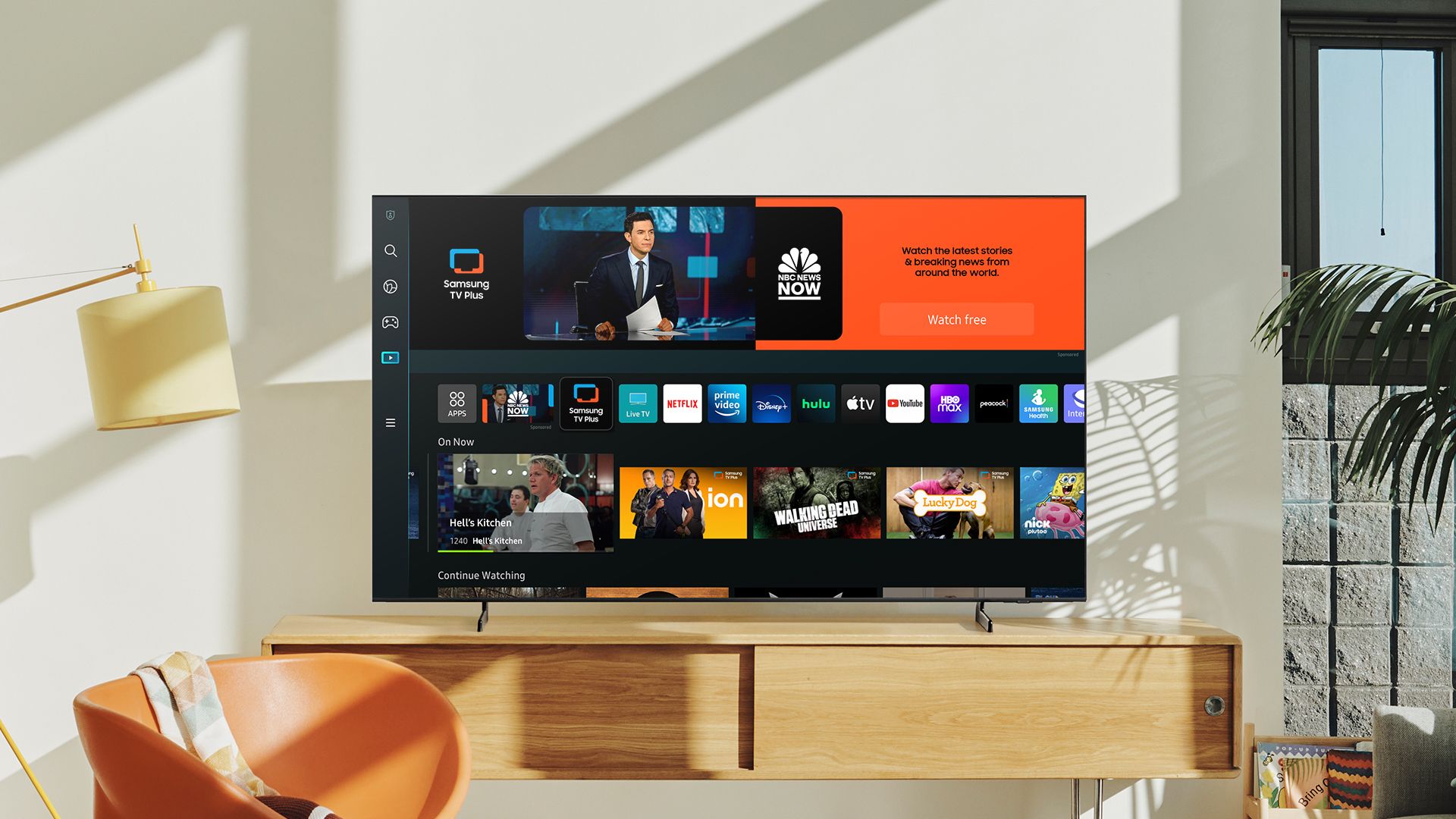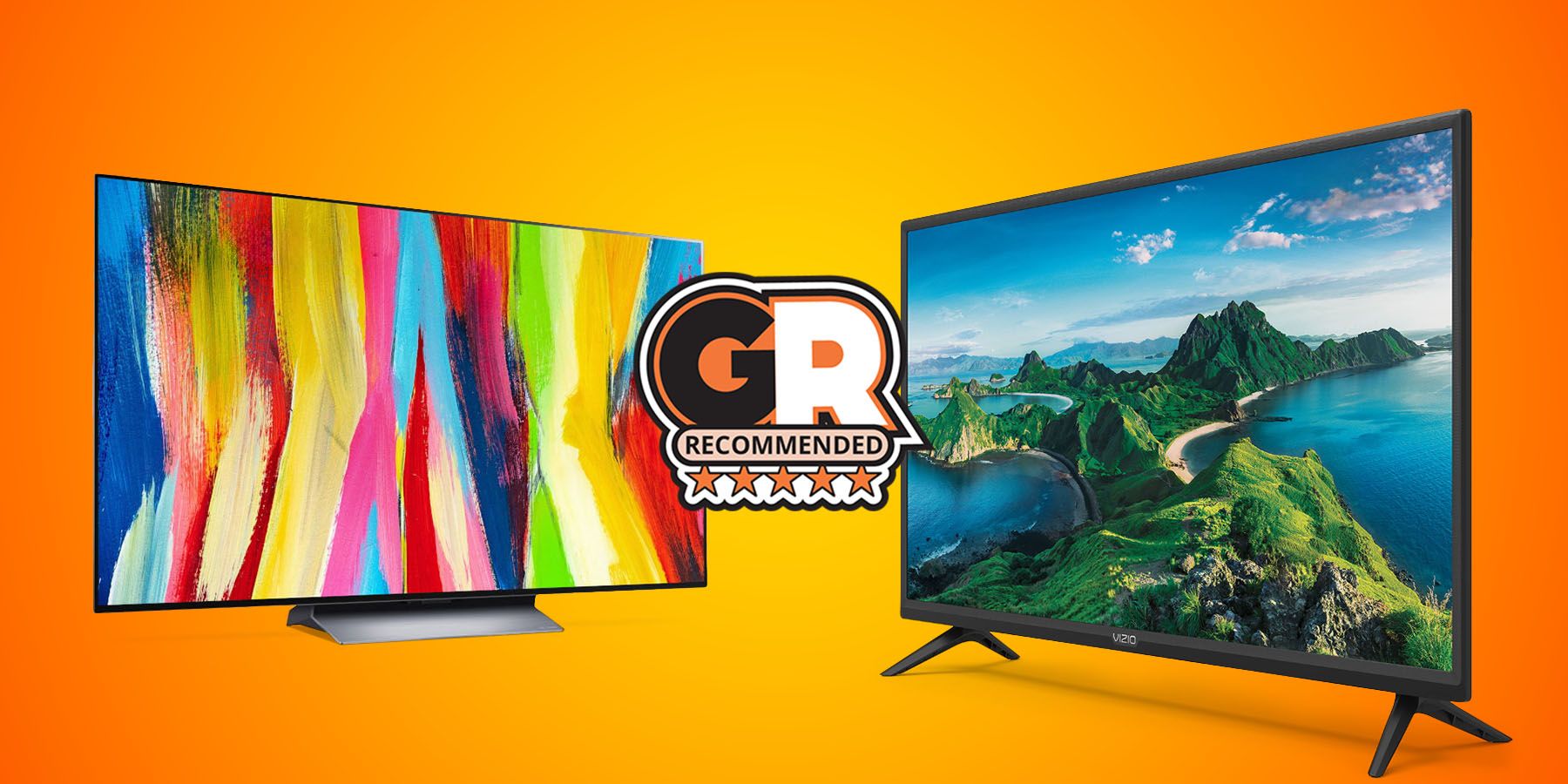-
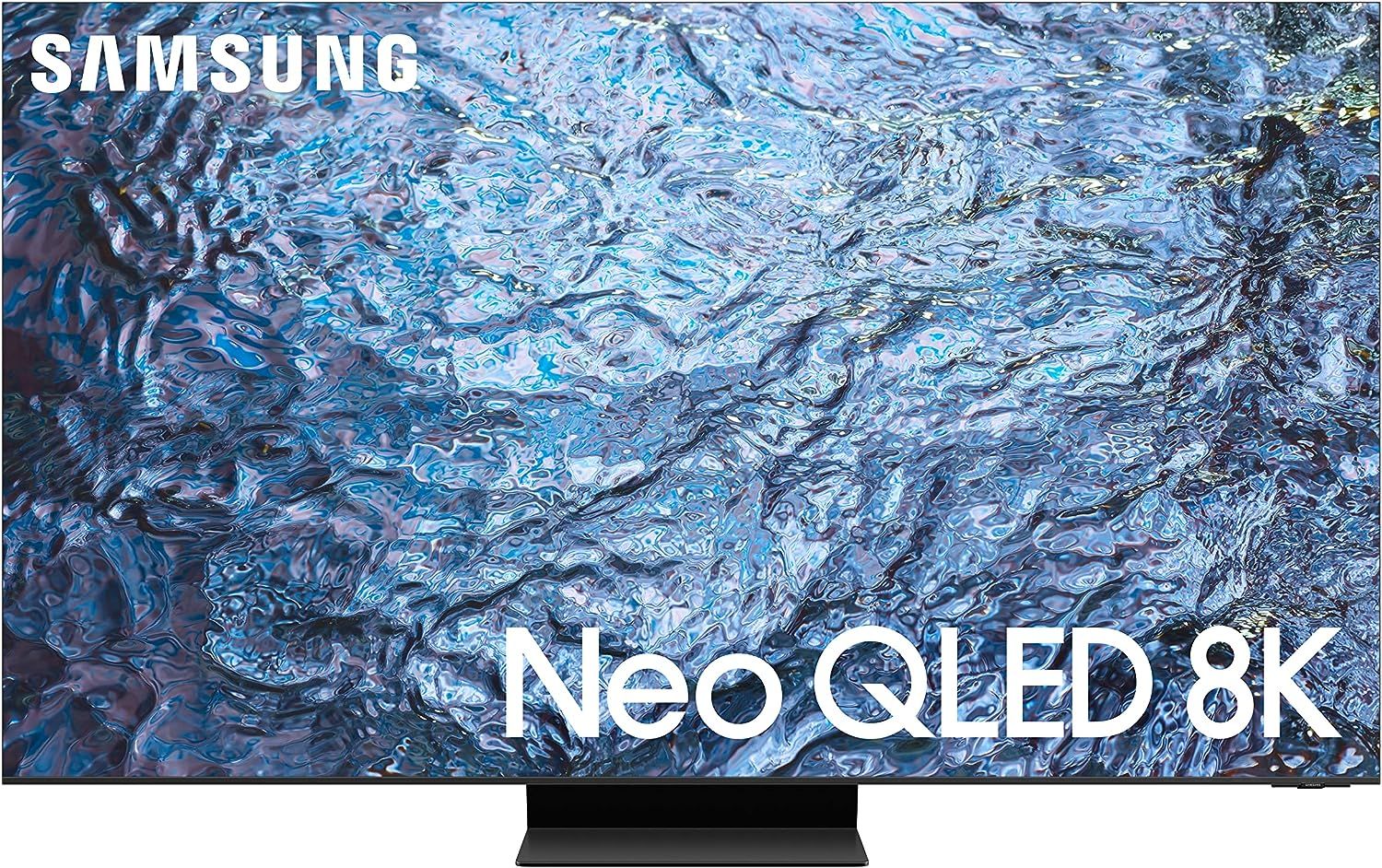 The Pinnacle of QLED
The Pinnacle of QLEDSamsung Neo QLED 8K QN900C
$3000 $5000 Save $2000The Samsung Neo QLED 8K QN900C represents a pinnacle of Samsung's QLED advancements. Its Mini-LED backlight unleashes stunning 8K resolution with exceptional brightness levels and refined control over dimming zones, creating remarkable high dynamic range (HDR) performance.
- Display Technology
- QLED
- Brand
- Samsung
- Refresh Rate
- 120 Hz
- Resolution
- Neo Quantum HDR 8K Pro
- HDR?
- Yes
Pros- Exceptional peak brightness
- Future-proof 8K resolution
Cons- OLED still boasts the deepest blacks
- No Google Assistant
- Cutting-edge technology comes at a price
-
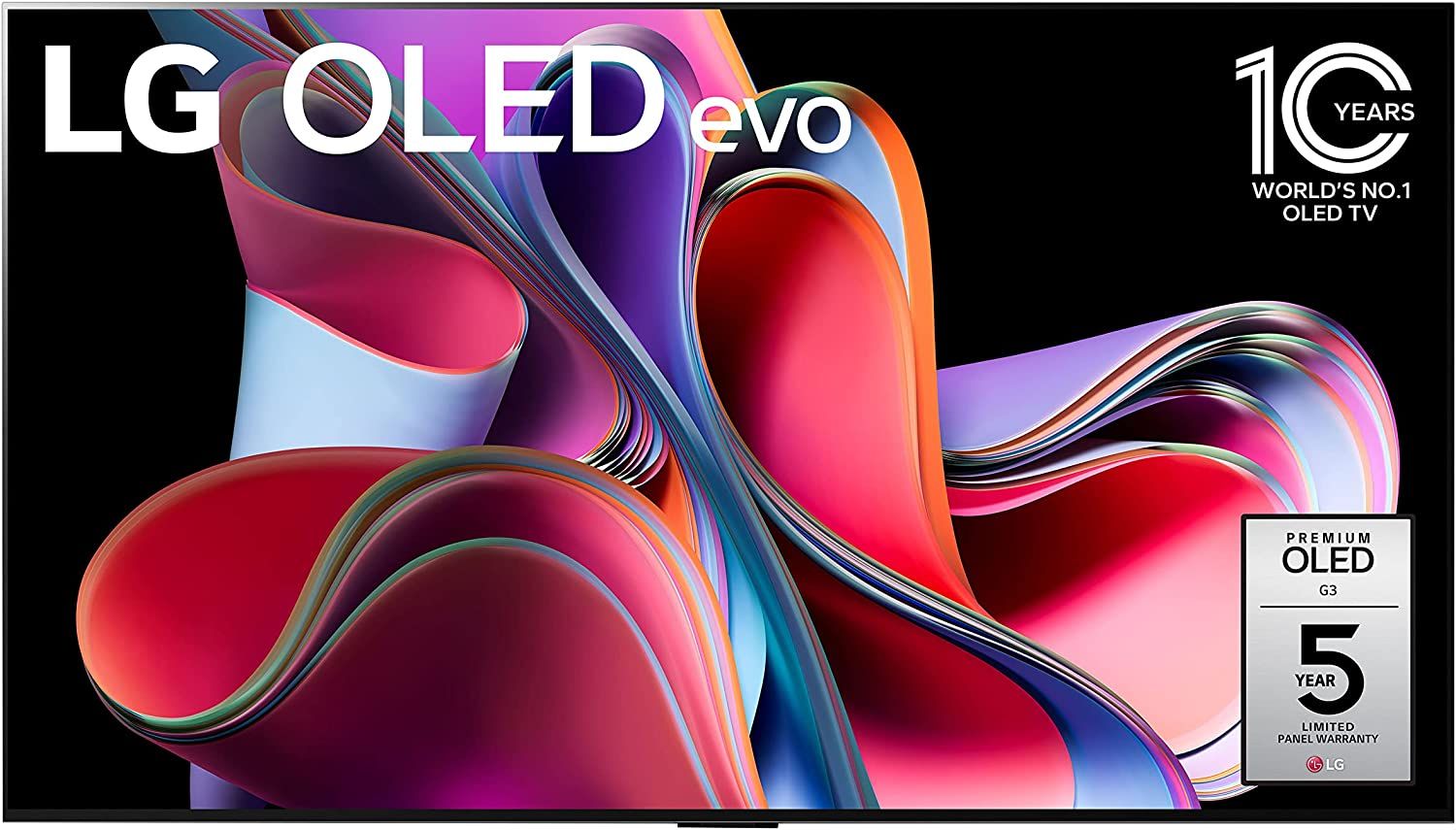 Unparalleled OLED Quality
Unparalleled OLED QualityLG G3 65 Inch OLED EVO TV
$2600 $3000 Save $400The LG G3 65 Inch OLED EVO showcases the power of LG's OLED technology. Its self-emissive pixels deliver the deepest blacks and infinite contrast, combined with the brightness-boosting enhancements of OLED evo technology. This combination creates unparalleled picture quality that stands out, especially in darker viewing environments.
- Display Technology
- OLED EVO
- Brand
- LG
- Refresh Rate
- 120Hz
- Resolution
- 4K (3840x1920)
- HDR?
- Yes, With Dolby Vision Support
Pros- Perfect blacks and infinite contrast
- Improved brightness over previous OLEDs
Cons- Lower peak brightness
- Premium price for a 65-inch TV
The world of television technology is constantly evolving, and two titans lead the charge: Samsung and LG. Both South Korean giants continually push boundaries with stunning displays, innovative features, and sleek designs, striving to provide the best TVs for all types of entertainment. Since both brands manufacture budget TVs and high-end premium ones, deciding which TV brand is best hinges on understanding the subtle but significant strengths that set them apart.

The Best TVs in 2024
Game ZXC looks at the best of the best OLED, Mini-LED, and LED TVs available in 2024.
LG and Samsung are both prominent TV manufacturers, with a wide lineup of products catering to different needs and budgets. Selecting the perfect television goes beyond just screen size and brand recognition. Stunning display technologies, immersive audio, cutting-edge gaming features, and intuitive smart interfaces all play a role in crafting an exceptional viewing experience.
LG vs Samsung TV: Head-To-Head
Samsung and LG are fierce rivals, each with a loyal following and a legacy of innovation. Samsung boldly champions QLED technology, known for its vibrant colors and superior brightness, while LG leads with OLED for unmatched contrast and perfect blacks.
The table below compares two of the best TVs from each manufacturer and demonstrates that the two are evenly matched in most areas. While personal preference will undoubtedly influence the final decision, understanding the key factors that differentiate the two models equips a buyer with the required knowledge to find the best TV for streaming the content they like.
Display Technology
LG stands at the forefront of OLED (Organic Light-Emitting Diode) technology, known for exceptional picture quality. OLED screens don't require a backlight; each pixel produces its own light and color. This self-emissive characteristic unlocks perfect blacks, infinite contrast, and vivid colors. Since every pixel can be independently switched off, OLED TVs deliver deep blacks unseen on traditional LED TVs.
Samsung has invested heavily in QLED (Quantum Dot Light-Emitting Diode) technology. QLED TVs use quantum dots—microscopic particles emitting incredibly pure colored light. Quantum dots boost the brightness and color range of traditional LED backlights. QLED displays excel in brightly lit rooms and offer a wider spectrum of colors than conventional LCDs. Compared to OLED panels, QLED televisions boast brighter images, a significant advantage for those who need a TV for a room with lots of ambient light.
It's also worth noting that despite the two brands' preferences for different display technologies, these technologies aren't exclusive to either brand. Samsung makes plenty of excellent OLED TVs, and LG also uses a technology similar to QLED called LG QNED.
Both companies dabble in innovative Mini-LED technology. Mini-LEDs, as their name suggests, are much tinier light-emitting diodes packed densely behind an LCD panel. This allows for far more granular control of dimming zones, meaning portions of the screen can be much darker or brighter as needed. This delivers significantly improved contrast, approaching the deep blacks of OLEDs while retaining the brightness advantage of QLED.
OLED TVs currently have the edge thanks to self-illuminating pixels, unmatched contrast, and perfect blacks. However, QLEDs and especially Mini-LED TVs are closing the gap and excelling in terms of brightness. The best choice depends on individual needs—LG OLEDs win for movie lovers who enjoy watching in dim rooms, while Samsung QLEDs are better for those with bright viewing environments.
Software and Smart Features
LG TVs are powered by their proprietary webOS smart platform. WebOS is widely praised for its user-friendly interface, offering snappy navigation and easy access to streaming apps and other smart features. LG's motion-controlled Magic Remote further improves ease of use and allows for efficient onscreen pointing and selection. Such subtle conveniences might not be a big deal to gamers, but make LG one of the best TVs for seniors.
Samsung employs its own in-house Tizen OS on its smart TVs. Tizen boasts a heavily curated content-first approach, making it easy to find the latest shows and movies across major streaming platforms. While somewhat less intuitive than LG's system, Tizen provides a clean and straightforward way to access content. Samsung Smart TVs offer a more traditional remote control style.
Both LG and Samsung support voice commands. LG ThinQ AI integrates with Amazon Alexa, Google Assistant, and even Apple Homekit for broader smart home control. Samsung Smart TVs feature its Bixby assistant and also Alexa. Google Assistant used to be an option on Samsung TVs, but Samsung had to remove the feature due to a change in Google’s policies.
Determining a winner in this category is largely a matter of preference. WebOS holds an edge in ease of use and LG's Magic Remote can feel intuitive. Tizen caters to content discovery and delivers a solid smart TV experience. Regarding voice assistants and smart home integration, LG has an obvious advantage by having Google Assistant built into its TVs.
Audio Technology
Regarding built-in audio, the landscape is more varied. Neither Samsung nor LG consistently dominate across every model in their lineups. Regardless of brand choice, television manufacturers face constraints regarding audio due to their emphasis on thin, visually appealing designs. This is where external sound solutions shine. Adding a gaming soundbar or dedicated multi-speaker home theater system significantly elevates the audio experience to match the quality of a TV's stunning visuals.
Both brands employ audio enhancement technologies such as Dolby Atmos. Moreover, Samsung's AI Sound Remastering analyzes content to optimize audio settings scene-by-scene. On the other side, LG's AI Sound Pro dynamically adjusts sound profiles and can even simulate surround sound for more immersive experiences.
These intelligent sound systems contribute to a more engaging audio experience when coupled with robust speaker systems. The Samsung SC95 OLED, for instance, is one of the few TVs that mesh brilliant visuals and audio together. It also features an Object Tracking Sound (OTS) system, making the content even more immersive.
Determining a clear winner in the audio department is difficult. Both brands feature capable built-in speakers on select models, though audiophiles will certainly benefit from an external surround sound system, regardless of the TV chosen.
Gaming Features
Both Samsung and LG offer gaming-centric features that make their TVs great for gaming. Low input lag is vital for responsiveness, and both brands provide TVs that minimize the delay between a controller input and the on-screen action. High refresh rates of 120Hz or above ensure smooth motion, making these TVs great for new-gen consoles like Xbox Series X.
Variable Refresh Rate (VRR) technologies, like AMD's FreeSync and Nvidia's G-Sync, synchronize the display's refresh rate with graphics cards for a tear-free, stutter-free gaming experience. This feature expands TV gaming beyond consoles; newer Samsung and LG TVs make great PC monitors. It's worth noting that, despite these efforts, the fastest TV is still slower than most gaming monitors, but that is a small price to pay for enjoying a bigger screen. Budget gaming TVs tend to be cheaper than widescreen gaming monitors.
High Dynamic Range (HDR) dramatically enhances the visual punch of next-generation games. Samsung and LG support various HDR formats, including the industry-standard HDR10. Additionally, Dolby Vision IQ is available on some LG sets, intelligently adjusting HDR settings on the fly based on ambient light conditions. Nearly all TV brands have their own marketing words for the HDR technology they use, such as Quantum HDR, HDR Ultra, and so on. Most of these are essentially the same as HDR10. However, Dolby Vision is known to perform better than standard HDR10.
In addition, dedicated gaming modes tailor a TV's settings for optimal performance. These modes frequently adjust picture parameters for increased clarity in dark game scenes, alongside audio profiles designed to make the soundscapes suitable for gaming on TV. Both Samsung and LG include these game-focused optimization tools.
Samsung and LG pull out all the stops for gamers. Low input lag, high refresh rates, VRR, HDR enhancements, and game optimizer modes create seamless, immersive experiences. While both contenders provide stellar gaming capabilities, LG boasts a slight advantage thanks to its Dolby Vision support.
The Verdict
Samsung and LG sit atop the television market, but their strengths cater to different needs. If a living room is bathed in sunlight, or the most dazzlingly bright picture is paramount, Samsung's QLED technology (especially their cutting-edge Mini-LED offerings like the Neo QLED 8K QN900C) delivers stunning results. Colors remain vibrant, and the image stays crisp regardless of ambient light.

Samsung Neo QLED 8K QN900C
The Samsung Neo QLED 8K QN900C delivers a stunning viewing experience thanks to its cutting-edge display technology. Featuring advanced Quantum Mini LEDs, the QN900C boasts incredible 8K resolution with exceptional detail. The QLED technology ensures remarkably high brightness levels, making this TV ideal for even brightly lit environments. Colors remain vivid and images retain their depth and clarity regardless of the ambient light in your room.
However, movie aficionados who crave inky blacks and the finest contrast for a truly cinematic experience, especially in a darkened home theater setup, will find LG's OLED technology unmatched.

LG G3 65 Inch OLED EVO TV
For discerning viewers seeking an unparalleled cinematic experience, the LG G3 65 inch OLED EVO TV demands a place of honor in the home theater. This television leverages the strengths of LG's OLED technology, renowned for its ability to completely turn off individual pixels. This results in inky blacks, vastly superior contrast to traditional LED displays, and a lifelike image that transports viewers directly into the scene.
Neither brand delivers a clear knockout in audio. Those demanding cinematic sound will consider external solutions regardless of the TV chosen. Both LG and Samsung TVs will please serious gamers, though LG's Dolby Vision support gives it a slight edge. Smart features like voice control are well-executed on both, with Samsung missing the mark only due to a lack of Google Assistant integration.
The ultimate decision often comes down to personal preference and viewing environment. Before making a final choice, weighing individual needs, researching specific models, and, if possible, comparing both types of display technologies side-by-side in stores can help find the TV that delivers the perfect blend of features and visual splendor.

